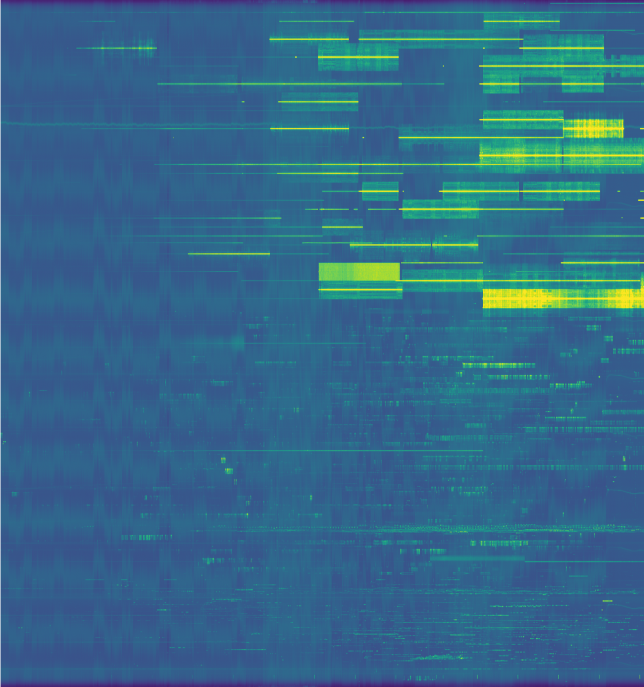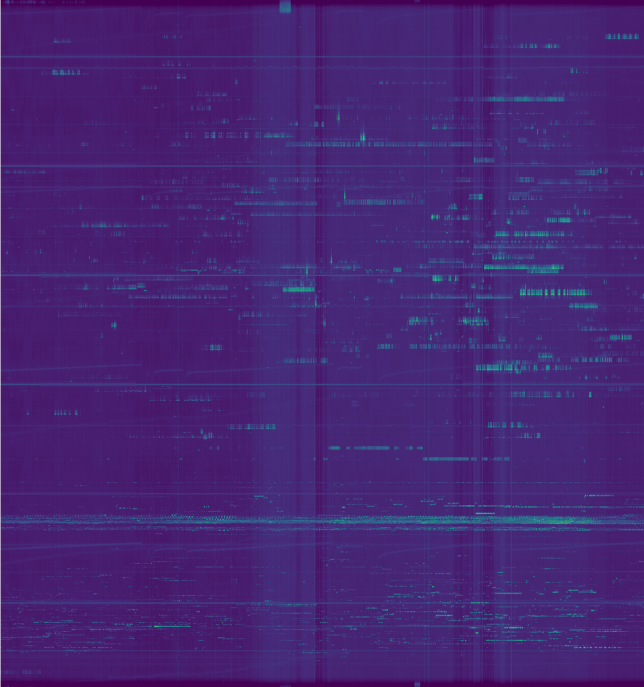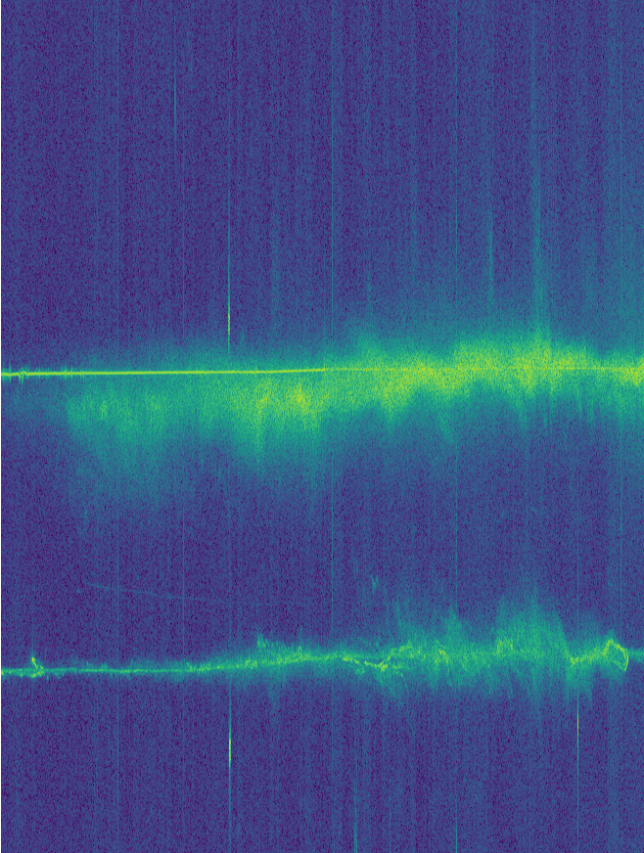Last Monday I did a recording for the HamSci eclipse 2017 HF wideband recording experiment. I used my Hermes-Lite 2.0beta2 to record three 384kHz slices: the 40m band, the 30m band and the 20m band, from 14:00 to 22:00UTC. The 3 band recording in Digital RF format has a size of 248GB, so I’m still compressing the data to upload it to Zenodo.
Meanwhile, I have used a variation of my usual Python script to plot waterfalls of the recording. Below you can see waterfalls for the 3 bands. They use the same scaling, with a dynamic range of 50dB, so it is easy to see how the noise floor changes per band. The carriers of the strongest broadcast AM stations are clipped. The resolution in these waterfalls is 187.5Hz or 15s per pixel.



I have also taken a high resolution waterfall around the WWV carrier at 10MHz. The resolution is 22.9mHz or 65.5s per pixel, and the frequency span is 19.95Hz.

Near the centre of this waterfall, two signal can be seen. The signal which is concentrated in frequency is leakage from my 10MHz GPSDO. The signal which is spread out in frequency is the carrier of WWV, probably mixed with BPM. I’m not sure about the identity of the signal below them, which is about 5Hz below 10MHz. I suspect that it is JN53DV.
This waterfall shows that the 500ppb TCXO of my Hermes-Lite 2.0beta2 is stable to a few tens of parts per billion, as I remarked in my WSPR study.
I have also uploaded large high resolution waterfalls. The Python code used to produce these images is in this gist.
Update 29/08/2017: I have finished uploading the IQ recordings to Zenodo. These are found at: